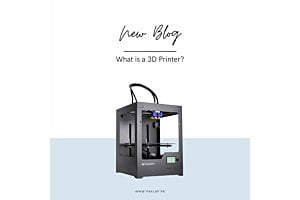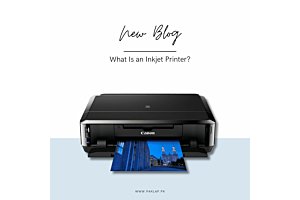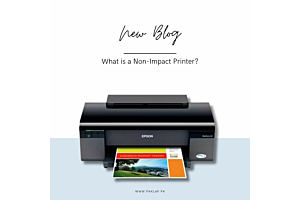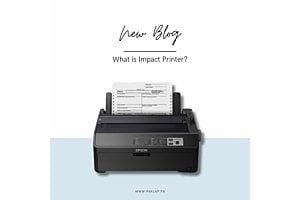What is a Thermal Printer?
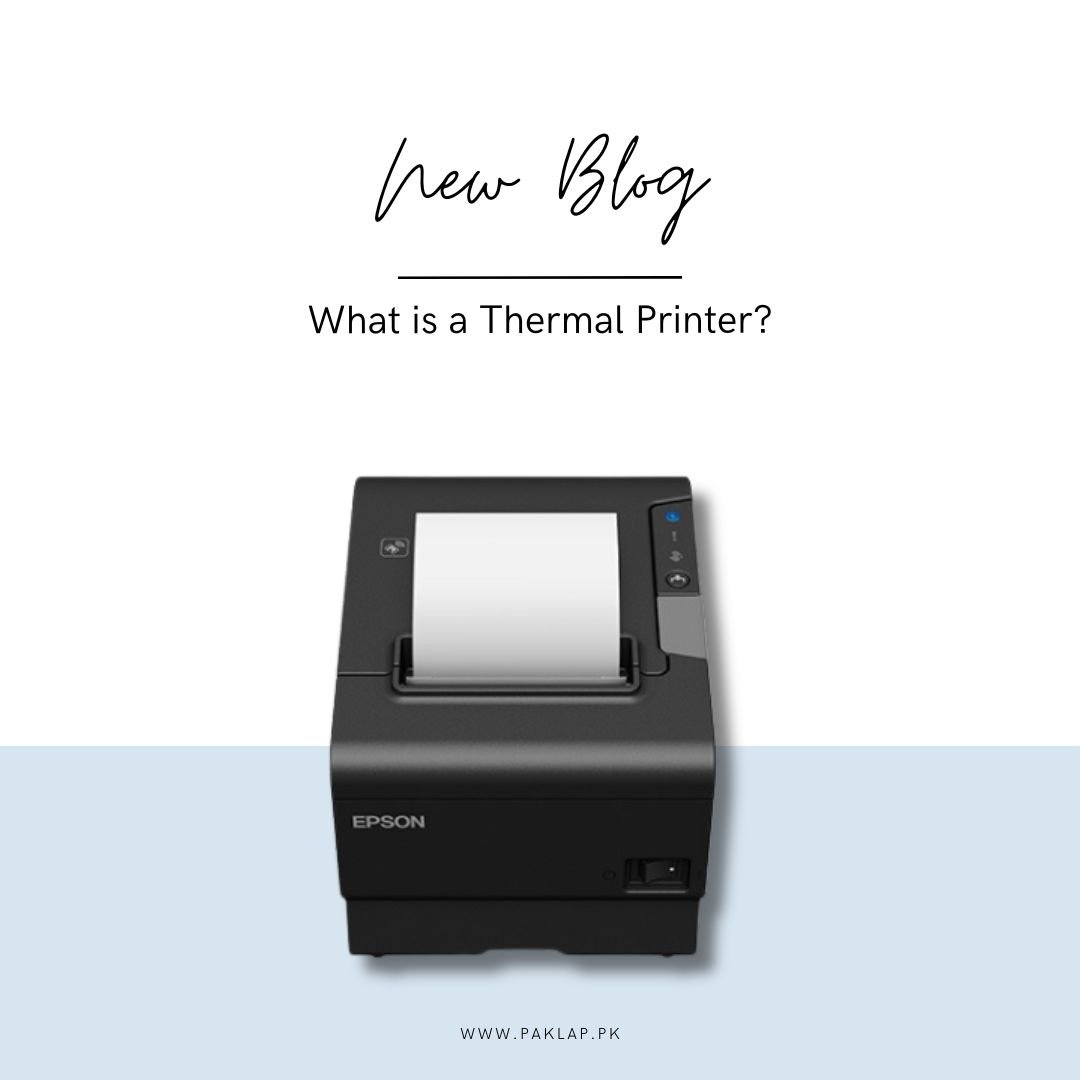
As the name suggests, Thermal Printers work by using heat from a heated printhead in order to make black text or images on a surface. The surface here is usually a special paper that has the ability to change its color when it is heated and is called thermal paper. Other than this, the surface can also be a ribbon that consists of solid ink that tends to melt on the surface. These machines are quite popular in making labels, receipts, barcodes, ID badges, and more and they are used in lots of different industries because of their versatility and efficiency.
Two Methods, One Purpose
Here, we shall be discussing how this gadget will get its job done. For this purpose, we are going to break it down into two methods that are mentioned below:
- Direct thermal printing
- Thermal transfer printing
Direct Thermal Printing
For this one, you can simply forget about the ink or toner. Instead of that, the printhead uses heat and pressure right onto heat-sensitive thermal paper. Due to this, the paper reacts to the heat and turns black where it's heated, which consequently helps in the creation of images or text.
These are good for several reasons, which include that they are easy on the wallet for maintenance since there's no need for ink or toner. But there's also a negative point: your prints might fade over time, especially when exposed to heat and light. Ever notice how old receipts on thermal paper end up losing their print? That's the downside. Plus, you are also limited to printing it in one color since the paper itself determines the color.
Thermal Transfer Printing
With this one, things tend to work a bit differently. Instead of directly printing onto the material, the printhead here is going to press a ribbon coated with wax-based ink onto it. The heat is going to melt the wax, which as a result exposes the ink which then sticks to the material and dries.
The advantage here is that the prints are less likely to fade over time when you compare them with the other ones. Also, this also allows you to print in multiple colors at once if your printer has several ribbons.
But there is also a catch: you will need to replace the ribbon, which adds up in maintenance costs over time. Also, with more parts involved, these printers might have more occasional hiccups, but they're still generally reliable and sturdy.
Exploring their Many Roles
So, thermal printers can multitask really well which allows them to find their way into all sorts of jobs because they're eco-friendly, have good speed, and are also pretty easy to move around. Now, we will dive into their world and see where they are used the most:
Logistics and Transportation:
As you may already know, the shipping centers and warehouses are usually buzzing with activity. Now here, these machines help with everything - they label up the packages to keep track of what's coming and going. They also whip up the packing slips and return labels in a snap.
Manufacturing:
While many of you may not know about this, these machines are also used behind the scenes in factories. With their help, you can churn out labels for all sorts of things, and also make sure that all the products are meeting the safety standards. They also help in keeping tabs on equipment maintenance, and even tracking how things are shaping up on the production line.
Healthcare:
Have you ever noticed the wristbands that the patients are made to wear in the hospitals? These machines are the ones who work to make those. Other than that, they also work to make the labels on medicine bottles and the tags on lab samples. And when it comes to keeping track of all those hospital gadgets and gear, these have got it covered.
Retail and Hospitality:
Next time you are roaming at the store or a hotel, you should really take a peek at your receipt—it probably came from a thermal printer. Other than those, these machines are also the ones that are making your price tags, guest passes, and snazzy ID badges for staff.
Government:
Even the government relies on these to some extent. They are known as the go-to for printing labels that keep track of important stuff in the supply chain. Plus, they are also quite important in emergency situations and play a big role in making sure everyone's ID badges are up to scratch.
So, whether it's speeding up your online order delivery or making sure your hospital bracelet stays put, these machines are quietly making life easier in all sorts of ways.
Evaluating Thermal Printers' Pros and Cons
If you are considering whether this is the right choice for you compared to other options or not, we know how to fix this for you. Here we will be weighing their pros and cons.
Pros:
Cost-Efficient Printing:
The best thing about this type of printer is that they are budget-friendly, and that is mostly because they do not rely on ink. This means that you can easily save up some money on ink cartridges and refills.
Low Maintenance:
Unlike other printers, thermal printers do not require ribbons, cartridges, or other supplies that need to be replaced regularly. You only need the printing media, which helps in making the maintenance hassle-free.
Portability:
These are pretty compact and easy to carry around. Whether you're in the office, warehouse, or at events like tradeshows, they can tag along, making them highly convenient.
Speedy Printing:
Thermal printers have an excellent speed. You'll get your prints almost instantly, with crisp, smudge-free results that are easy to read and long-lasting.
Durability:
They have very few moving parts which makes them less prone to breakdowns. Plus, their printheads can last up to a whopping 10 years on average, ensuring longevity and reliability.
Cons:
When it comes to the cons, there are a few things to keep in mind:
Fading Labels:
The labels made with them can fade over with time, especially when they are exposed to direct sunlight or high temperatures. Even labels on stored boxes can lose their clarity over the years. Storing them at room temperature can help prolong their lifespan.
Heat Sensitivity:
When these labels are exposed to high heat, they can turn thermal-printed labels completely black, which potentially erases important information. To avoid the loss of data, it's crucial to store labels in a cool, dry place away from any heat sources or direct sunlight.
Color Limitations:
Direct thermal printing typically only allows for black printing, although some colored options may be available for replacement labels or paper. If you need more color variety, thermal transfer printers offer a wider range of colors and print media.
Cost Considerations:
While these offer efficiency and long-term savings on ink, they often come with a higher upfront cost. Also, the specialized parts can be costly to replace, and excessive heat can damage the printhead, leading to potential repair expenses.
By understanding these factors, you can make informed decisions about whether this meets your needs and budget.
